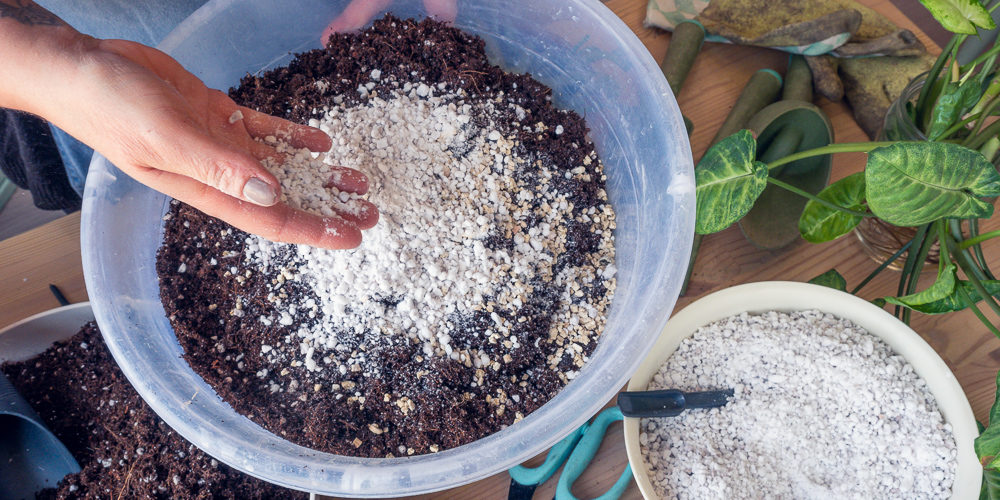How to Improve Your Garden Soil
Use any of these DIY soil tests to improve your garden soil. These tests will tell whether you have good soil, or if you have to make improvements.
Those big bags of potting mix can get expensive, especially for gardeners who plant a lot of containers.
It’s possible to save money by making your own mixes out of bulk, raw ingredients, or even to stretch the budget by adding your own compost to store-bought mixes.
One way to save right off the bat is to look for broken bags of potting mix at the garden center. These are often full (or nearly full) and sometimes discounted by 50 percent or more. Don’t scrimp on bargain brands that are heavy, poorly drained, and made using less desirable ingredients such as soil, sand, sawdust, wood fragments, and manures.
Good-quality potting mix is noticeably lighter in weight, and according to University of California plant pathologist Dr. Jim Downer, composed of such ingredients as peat moss, coir (coconut fibers), bark, perlite (volcanic glass that’s been super-heated to create what look like tiny pellets of Styrofoam), and/or compost, along with an organic or timed-release fertilizer to add nutrition.
Broken or not, store-bought bags can be stretched by adding free or low-cost amendments.
Top of the list is your own homemade compost, which typically includes a nutritious mix of recycled household organics such as leaves, grass clippings, weeds (that haven’t gone to seed), yanked garden plants, coffee grounds, eggshells, potato peelings from the kitchen, and so on.
Just be sure the compost has finished decomposing and has no odor before mixing it with store-bought potting mix. Working just 10 or 20 percent compost into a store-bought mix can save a few dollars while adding nutrition to the pot. Some gardeners use up to 50-50 blends, while “Foodscaping Revolution” author Brie Arthur says she’s used even 100 percent compost in her edible-plant pots with good success.
Besides homemade compost, mixes can be stretched by using less expensive bales of compressed peat moss or depending on price, bags or bricks of coir.

GENETTICA / iStock / via Getty Images
Another option is to make your own potting mix from scratch out of bulk, raw ingredients.
One homemade recipe that mimics quality retail potting mixes is a mixture of:
Jessica Walliser, author of “Container Garden Complete,” recommends a similar recipe of
University of Maryland Extension educator Jon Traunfeld says a suitable blend can be made out of just two ingredients – coir and compost – ranging from half of each to a blend of three parts coir to one part compost.

CemSelvi / iStock / via Getty Images
Some gardeners are moving away from peat-moss-based mixes lately out of environmental and climate-change concerns.
The main issue is that peat moss serves as a super-sponge when it comes to soaking up carbon that otherwise would end up in Earth’s warming atmosphere. Although peat bogs cover just 3 percent of the Earth’s surface, they store more carbon than all other vegetation types in the world combined – including trees – according to the International Union for the Conservation of Nature.
Harvesting peatland bogs reduces that layer and sends peat out in forms that are burned as fuel or that quickly decompose in gardens, releasing the stored carbon into the air.
The Canadian Sphagnum Peat Association, however, says that only a small fraction of Canada’s 279 million peatland acres (which supplies the bulk of peat-moss products to American gardeners) is being harvested. It adds that renewal seeding is done after harvest.
Unlike Great Britain, which is phasing out peat moss in gardening products, the U.S. has not imposed peat-moss restrictions.